My Kinabalu day trip with Hezekiah Asim, on February 5, 2014, continued - afer our squirrel-watching experiences at the Timpohon gate - with more trips up, down and around the Power Station Road, from the gate down to the Ranger Centre.
This time, we made a little more effort to appreciate the remarkable botany en route.
Unfortunately, "appreciate" is not the same thing as "identify". Is this a Begonia, or a Rubus of some sort?
This may be a sort of ginger, though it would have helped if the flower had seen fit to open.
As to what these are, I have no idea. Anyone?
I'd particularly like to know what this extremely attractive plant is.
I can take a stab at a few things, The fern, scrambling in tangled divaricating mats over the shoulders of the road, is presumably a Gleichenia.
This fearsome-looking palm is a rattan; there are several species, in a number of genera (eg Calamus, Daemonorops) on the lower slopes of the mountain.
Medinilla speciosa is one of Kinabalu's best-known plants, widely planted elsewhere as "Showy Asian Grapes", an ornamental. It also grows wild in Java and the Philippines.
Stunning rhododendrons of many species, with flowers large and small and a broad range of colours, are one of the highlights of Kinabalu. I think this is Rhododendron retivenium, but of course I am open to correction.
Hezkiah and I were, however, focused on the birds. One that I had seen before, but never so well, was the Bornean Whistling-Thrush (Myophonus borneensis), one of the duller of its genus, now split from the Sunda Whistling-Thrush (M. glaucinus). They can be quite shy, but this bird, photographed on the road edge, seemed quite used to being watched by birders.
All whistling-thrushes, apparently, fan their tails frequently while perched or foraging on the ground; I was lucky enough to catch this one in the act. Whistling-Thrushes tend to be associated with mountain streams, and I have long speculated that birds that live on or near rushing waters use displays of this sort to draw attention to themselves when the sound of the rapids would drown out their voices.
The acrobatic little Chestnut-crested Yuhina (Staphida everetti) is a common bird on the mountain, but it can be tricky to get a decent photo of one of these fast-moving little guys.
In addition to highland birds, Kinabalu of course is home to montane butterflies. The Blue Admiral (Kaniska canace) is the only member of its genus, though it is sometimes included in the genus Nymphalis with temperate butterflies such as the Mourning Cloak (N. antiopa). It ranges from India north to Japan and even southeastern Russia, and in Malaysia rarely ranges below 1200 metres.
Ragadia is a small genus of eight Southeast Asian nymphalid butterflies. Ragadia annulata appears to be one of its lesser-known members, confined to Borneo and the Philippines. It differs from the better-known Striped Ringlet (R. makuta) and other species in the genus in that the bright blue and yellow eyespots on the underside of the hindwing are enclosed within a dark brown band. Ragadia caterpillars feed, rather oddly, on Selaginella, a relative of the clubmosses (Lycopodium) common on the forest floor.
The recent tendency to split off a number of Bornean birds from their continental or Sumatran relatives has considerably increased the number of endemics recognized from the island. The Pale-faced Bulbul (Pycnonotus leucops) was formerly lumped with the Flavescent Bulbul (P. flavescens), but really doesn't look very much like it (besides its white face, it has a much less pronounced crest).
This pair proved to be extremely confiding; I took plenty of pictures, which is why you are being subjected to more photos of this species than usual.
One of the pair was much too absorbed in trying to swallow a large berry (from, I think, a Korobundui (Rubus fraxinifolius)) to worry particularly about me.
Here it is, with the berry successfully conquered.
While looking for birds, we turned up a few more Kinabalu squirrels. This, I am pretty sure, is Brooke's Squirrel (Sundasciurus brookei), a Bornean endemic named for the first of the White Rajahs...
...while this is the most easily-identifiable of the lot, Whitehead's Pigmy Squirrel (Exilisciurus whiteheadi) - unfortunately, at too great a distance to show how adorable this little creature is. It is another endemic, confined to the highlands.
One of our last birds, in the garden above the Ranger Centre, was another endemic, the lovely Bornean or Black-sided Flowerpecker (Dicaeum monticolum), seeking for berries (or whatever those fruits are).
At te end of our day on Kinabalu, Hezekiah admitted to me that birding had, to his surprise, quite captivated him. It gave him a chance to see that nature can not only be relaxing, but exciting. Of course, experienced birders already know that - but surely Mount Kinabalu is one of the better places to find it out.













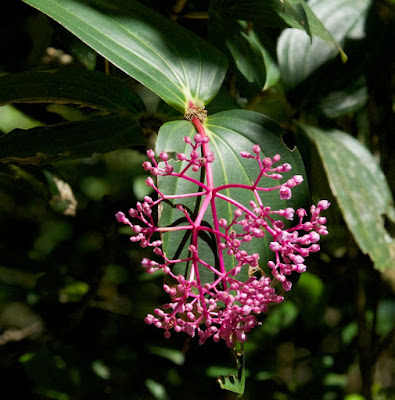





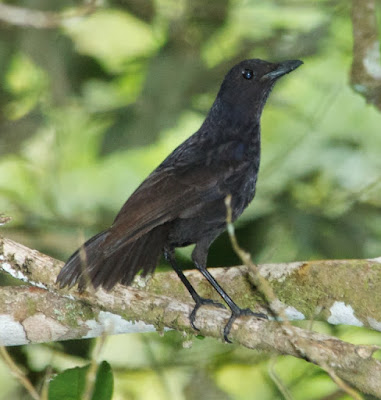











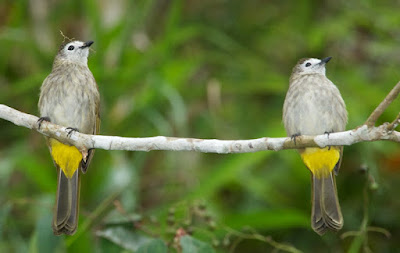




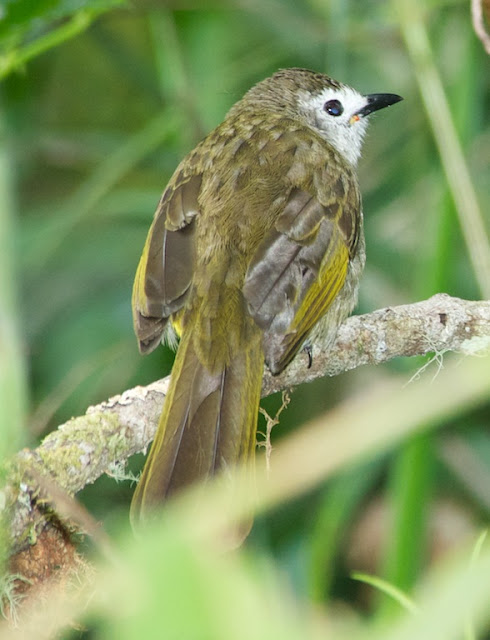

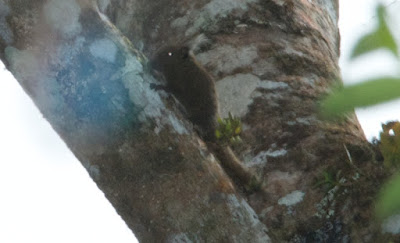
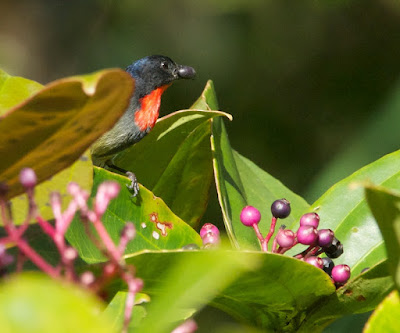


- That white shoot from ground is a young flower of arum /Amorphophallus/
ReplyDelete- white 'attractive' flower with red fruit from some /Goniothalamus/ species (Family Annonaceae)
:-)
Thank for the identifications - much appreciated. Please comment any time - I need help on these botanical IDs!
DeleteYour attractive plant is an Annonaceae (Goniothalamus roseus) I photographed !n 2007 on Mempening Trail in Kinabalu NP See :
ReplyDeletehttps://www.flickr.com/photos/berniedup/15802046181/in/album-72157650584501153/
Thanks for naming the species - much appreciated - and for referring me to your confirming photograph.
DeleteGreat site, phantastic photos. The white flowering plant is an elder-relative (Sambucus species, Adoxaceae (former Caprifoliaceae)), growing in higher elevations in tropic areas. Best wishes, Bostjan Dvorak
ReplyDeleteMany thanks - and thanks for the ID!
DeleteYou are right - the plant does look like a Sambucus. We see elders a lot in Canada but I didn't know that there was a representative on Kinabalu. An ice age relic, perhaps?
Delete